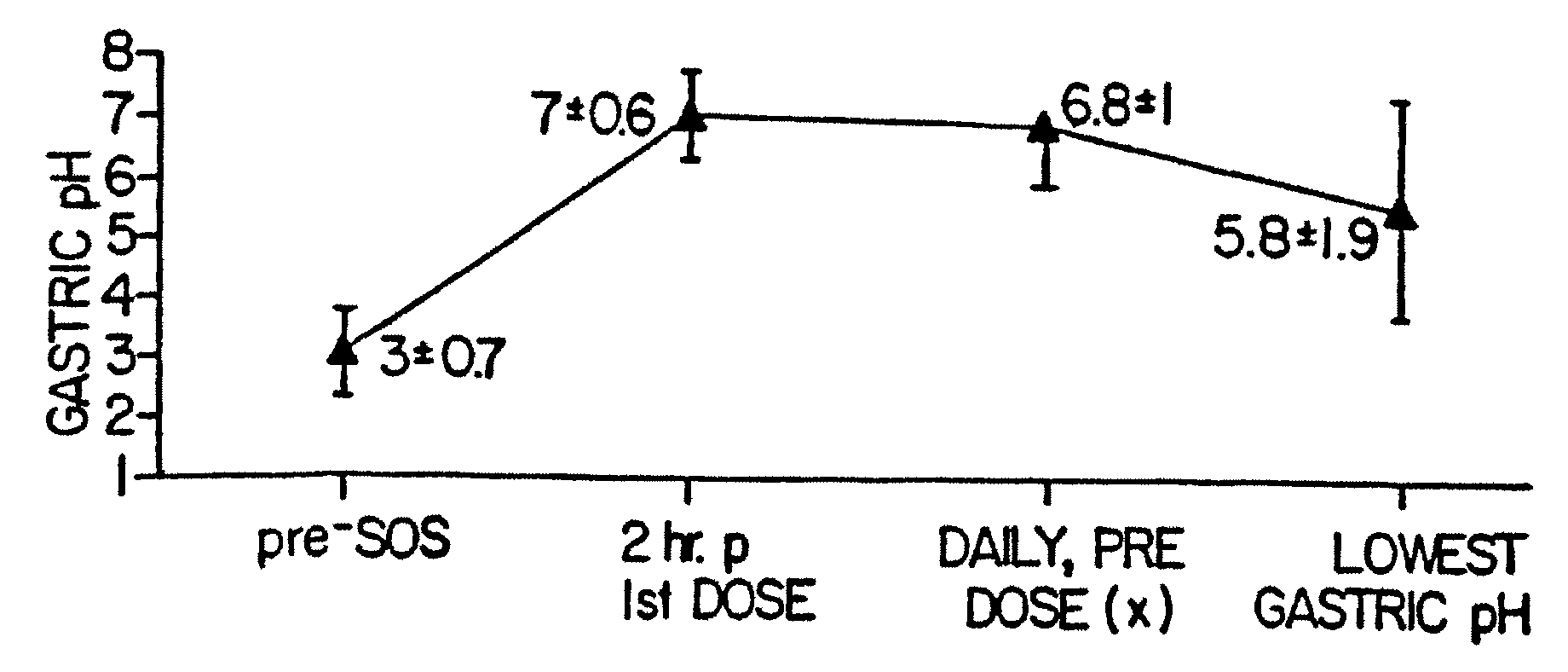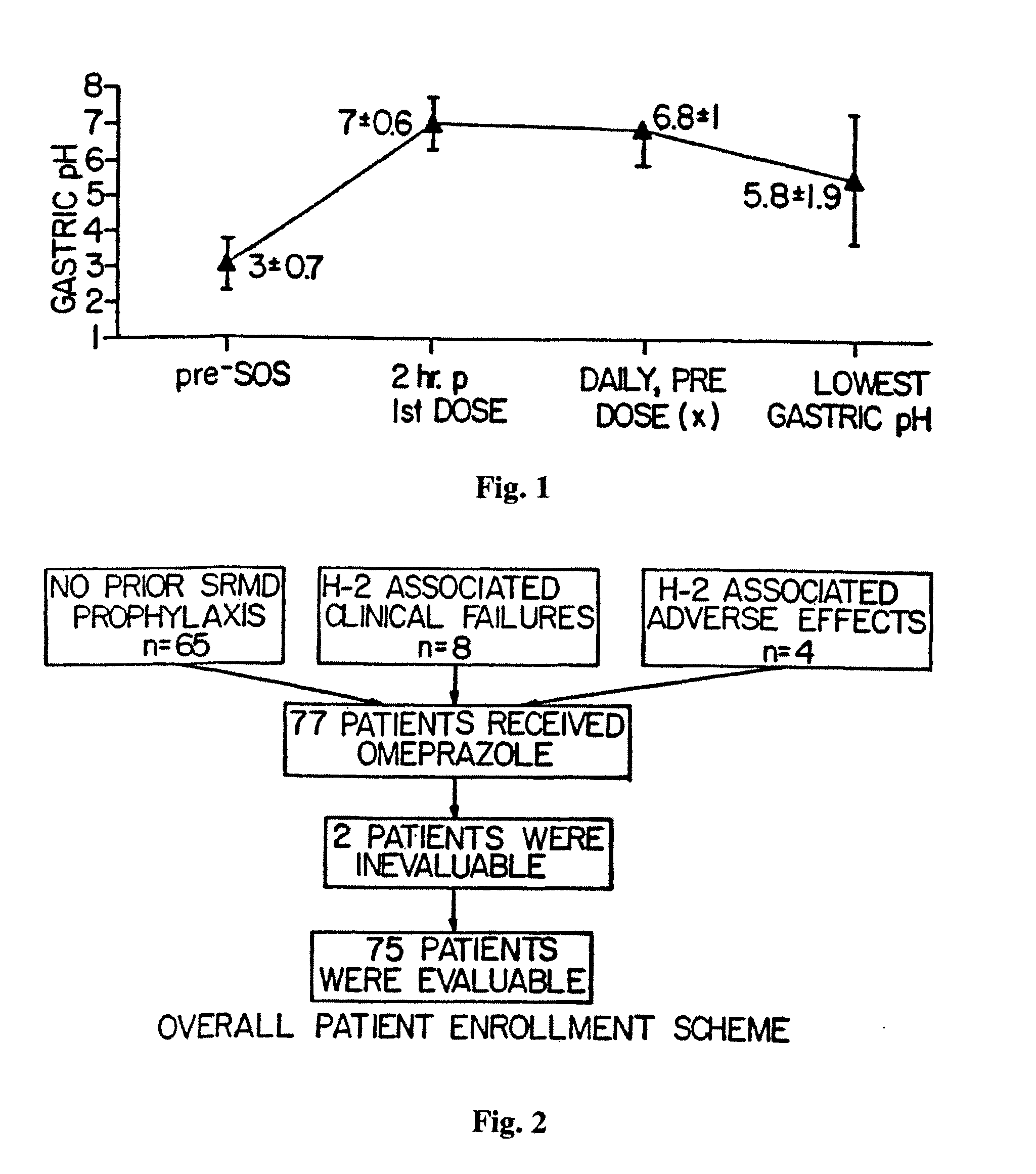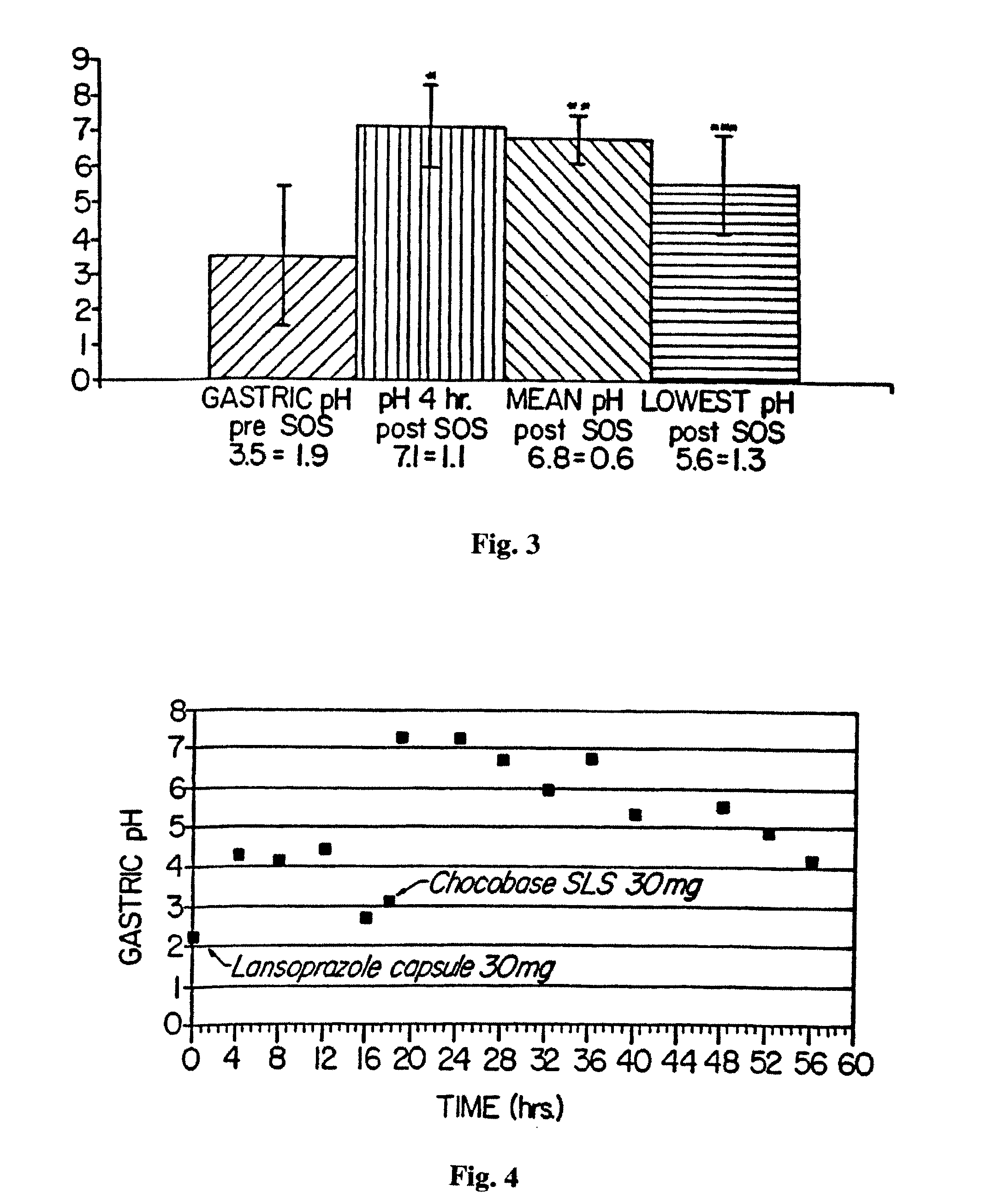Novel Substituted Benzimidazole Dosage Forms and Method of Using Same
a technology of benzimidazole and dosage forms, which is applied in the direction of drug compositions, inorganic non-active ingredients, dispersed delivery, etc., can solve the problems of significant upper gastrointestinal bleeding, adverse side effects, and inability to completely trea
- Summary
- Abstract
- Description
- Claims
- Application Information
AI Technical Summary
Benefits of technology
Problems solved by technology
Method used
Image
Examples
example i
[0122]A. Fast Disintegrating Suspension Tablets of Omeprazole.
[0123]A fast disintegrating tablet is compounded as follows: Croscarmellose sodium 300 g is added to the vortex of a rapidly stirred beaker containing 3.0 kg of deionized water. This slurry is mixed for 10 minutes. Omeprazole 90 g (powdered) is placed in the bowl of a Hobart mixer. After mixing, the slurry of croscarmellose sodium is added slowly to the omeprazole in the mixer bowl, forming a granulation which is then placed in trays and dried at 70° C. for three hours. The dry granulation is then placed in a blender, and to it is added 1,500 g of Avicel® AC-815 (85% microcrystalline cellulose coprocessed with 15% of a calcium, sodium alginate complex) and 1,500 g of Avicel® PH-302 (microcrystalline cellulose). After this mixture is thoroughly blended, 35 g of magnesium stearate is added and mixed for 5 minutes. The resulting mixture is compressed into tablets on a standard tablet press (Hata HS). These tablets have an av...
example ii
Standard Tablet of PPI and Buffering Agent
[0131]Ten (10) tablets were prepared using a standard tablet press, each tablet comprising about 20 mg omeprazole and about 975 mg sodium bicarbonate uniformly dispersed throughout the tablet. To test the dissolution rate of the tablets, each was added to 60 ml of water. Using previously prepared liquid omeprazole / sodium bicarbonate solution as a visual comparator, it was observed that each tablet was completely dispersed in under three (3) minutes.
[0132]Another study using the tablets compounded according to this Example evaluated the bioactivity of the tablets in five (5) adult critical care patients. Each subject was administered one tablet via ng with a small amount of water, and the pH of ng aspirate was monitored using paper measure. The pH for each patient was evaluated for 6 hours and remained above 4, thus demonstrating the therapeutic benefit of the tablets in these patients.
[0133]Tablets were also prepared by boring out the center...
example iii
PPI Central Core Tablet
[0134]Tablets are prepared in a two-step process. First, about 20 mg of omeprazole is formed into a tablet as is known in the art to be used as a central core. Second, about 975 mg sodium bicarbonate USP is used to uniformly surround the central core to form an outer protective cover of sodium bicarbonate. The central core and outer cover are both prepared using standard binders and other excipients to create a finished, pharmaceutically acceptable tablet.
PUM
 Login to View More
Login to View More Abstract
Description
Claims
Application Information
 Login to View More
Login to View More - R&D
- Intellectual Property
- Life Sciences
- Materials
- Tech Scout
- Unparalleled Data Quality
- Higher Quality Content
- 60% Fewer Hallucinations
Browse by: Latest US Patents, China's latest patents, Technical Efficacy Thesaurus, Application Domain, Technology Topic, Popular Technical Reports.
© 2025 PatSnap. All rights reserved.Legal|Privacy policy|Modern Slavery Act Transparency Statement|Sitemap|About US| Contact US: help@patsnap.com



